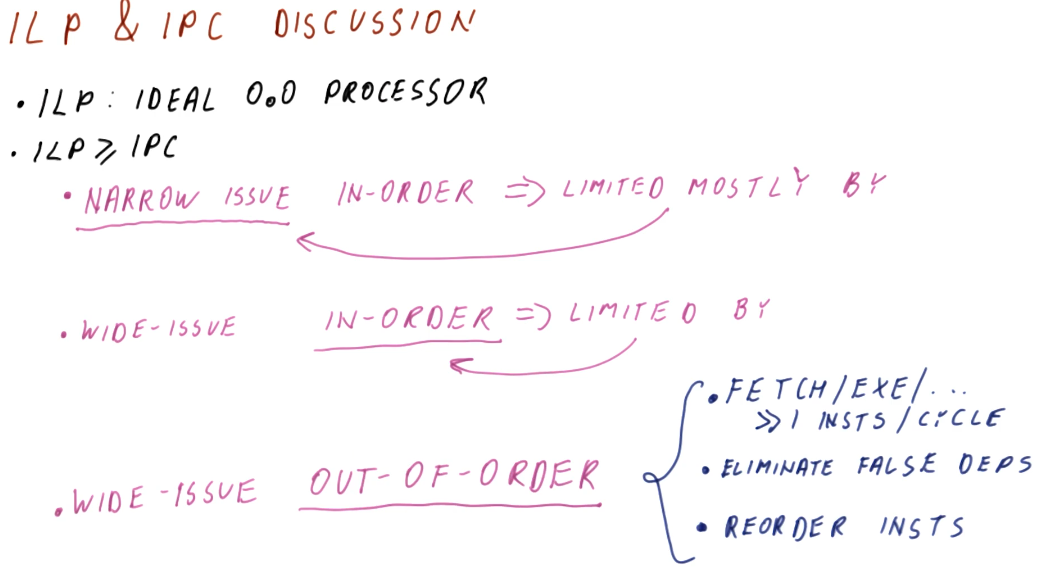What is ILP?
Instruction level parallelism (ILP) is a property of a program given the fact that it's running on an ideal processor. What's an ideal processor? An ideal processor has these attributes:
- Processor dispatches an entire instruction in
1cycle. - Processor can do any number of instructions in the same cycle.
- The processor has to obey true dependencies when doing this.
So what are the steps to acquire the value of a program's ILP? A program's ILP is equal to the IPC when executing on an ideal processor following the rules stated above. Obviously ideal processors like this always aren't achievable, the ILP for a program will be different on actual real-world processors. ILP gives us a value, however, for the parallel nature of program - defining how many true dependencies exist within the code.
The steps to acquire the ILP of a program are:
- Rename the registers, as shown previously.
- "Execute" the code on the ideal processor.
ILP example
The below excerpt from the lectures showcases how we can compute the ILP for a
given set of instructions: ILP == num instructions/cycles. In this example,
the professor identifies the true dependencies that exists for the set of
instructions and sees that the fifth instruction cannot execute until the writes
of instruction one and three are complete. Thus, this program will take 2 cycles
on an ideal processor to execute.
A neat trick that is described in the lecture is that we don't even have to conduct register renaming in order to calculate the ILP. All we have to do is identify the true dependencies - the register renaming will take care of the false or name dependencies for us.
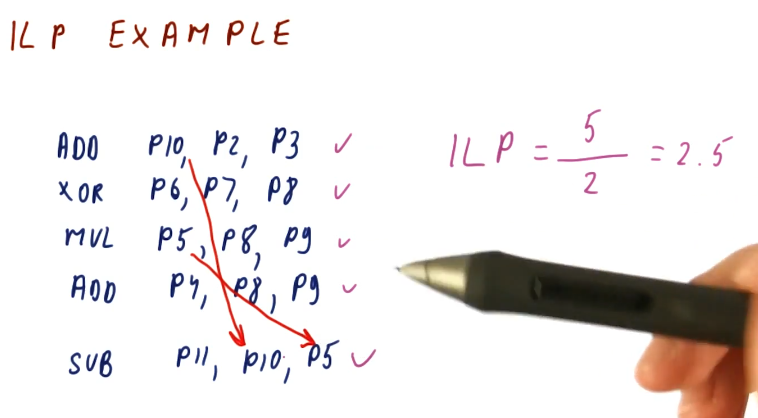
ILP quiz
Below is a quiz from the lectures showcase the technique for calculating ILP described above. We don't conduct register renaming, we just identify the true dependencies to determine on what cycle instructions are eligible to execute. After we determine the minimum number of cycles to resolve the true dependencies, we can find the ILP of the program.
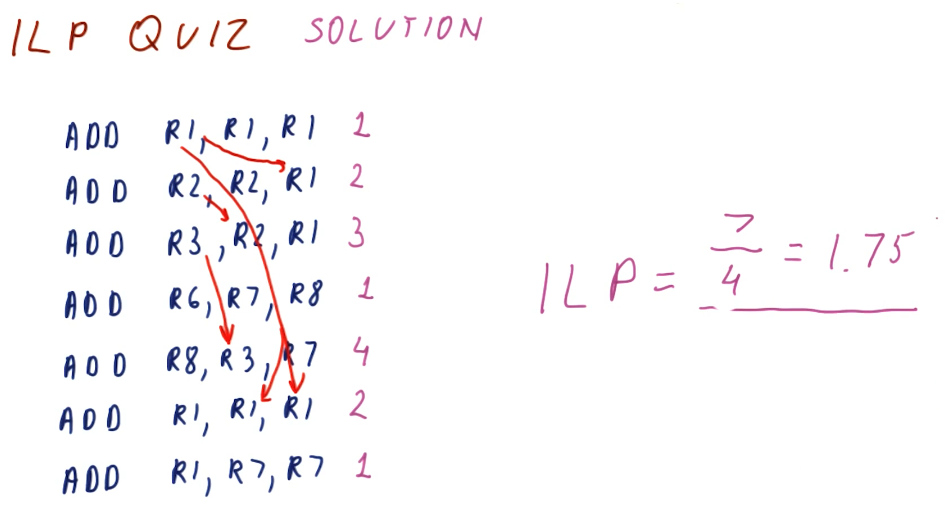
Calculating ILP with structural and control dependencies
When calculating ILP, we don't account for structural dependencies. These dependencies result for architectural issues like not having an adder available for a specific operation, etc. Something outside of the programmer's control, solely relies with the manufacturing of the processor.
For control dependencies, we essentially ignore them. We assume that we
have perfect same-cycle branch prediction. In the example below, we show that
a branch instruction has a data dependency on instructions prior to it, however,
because we have perfect branch prediction we know that we will jump to the
Label. Thus, we fetch the instructions from the Label and execute them, even
though our branch has not been executed, yet.
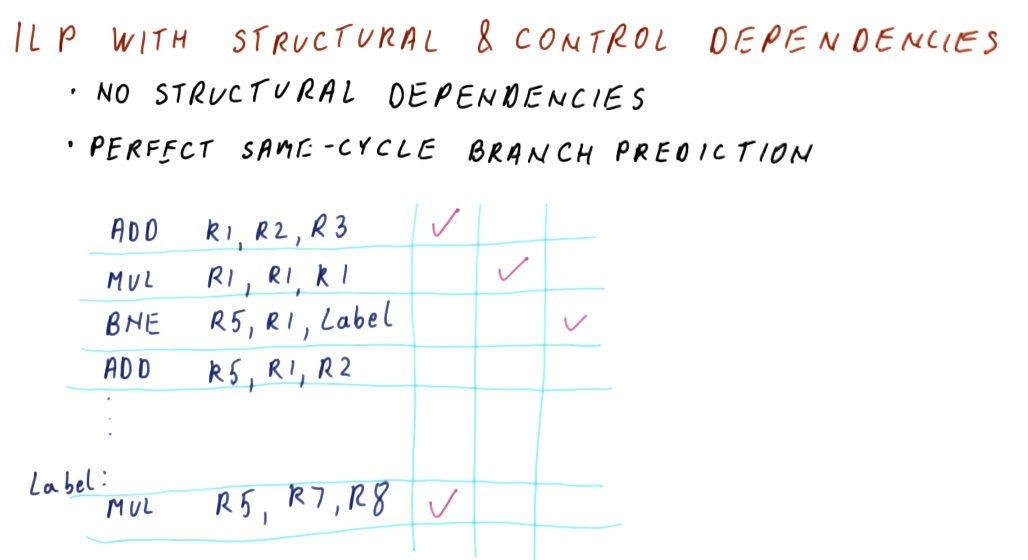
ILP vs IPC
Below is an excerpt from the class conducting a comparison of the calculations for ILP vs IPC on a given example processor. The processor has some limitations such as: 2-issue (2 instructions / cycle), 1 MUL and 1 ADD/SUB/XOR components (structural limitations). With this, we calculate the ILP for the given instructions and then we calculate the IPC twice: once ignoring the structural limitations and once factoring in the structural limitations.
As we can see, the IPC for a processor can only be equal to or less than the ILP. Real processors will have limitations and won't always be able to achieve the ILP of a program.
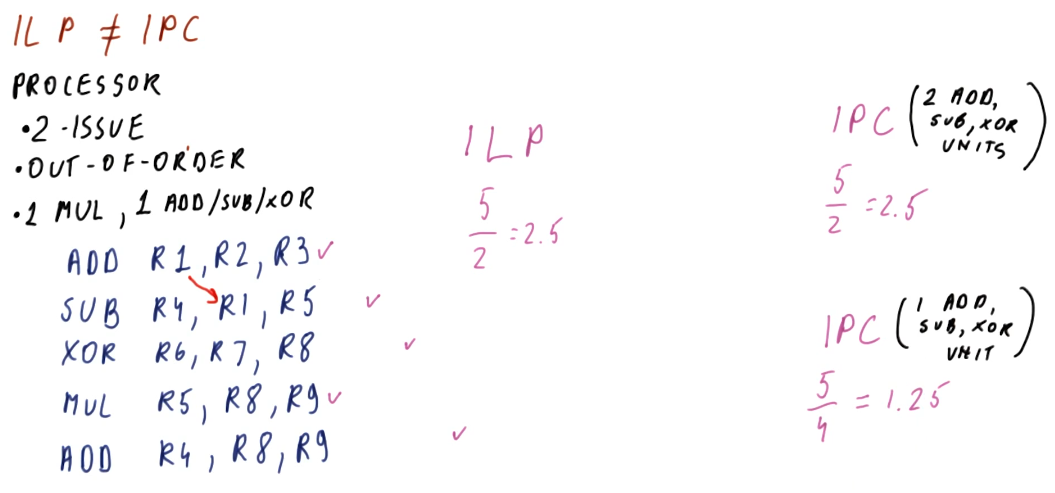
ILP vs IPC quiz
Below is a quiz from the lecture that shows us how to calculate and compare the ILP and IPC of a program for a given test processor. Note, the processor in this example can only dispatch instructions in order, thus degrading our performance in comparison with the out of order processor's we've seen in the past. This limitation causes us to have to stop dispatching instructions when we encounter a dependency.
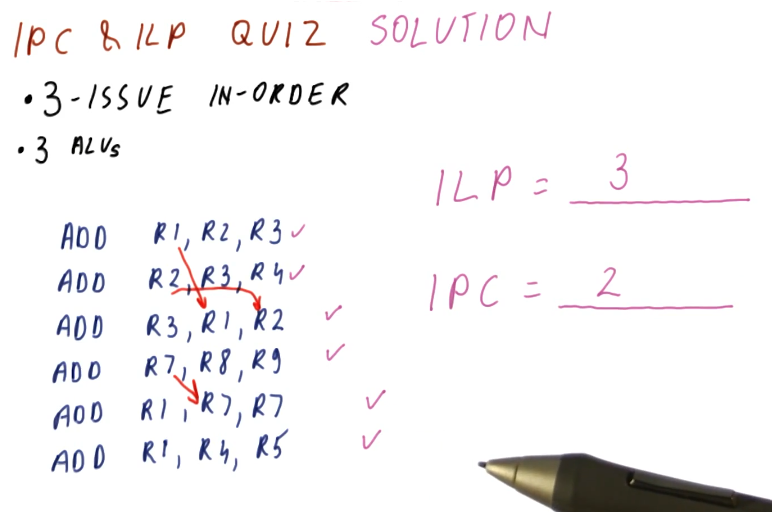
ILP vs IPC discussion
This slide sorta restates what we covered earlier - a summary, essentially. The ILP can only be calculated using the abstract concept of an ideal processor, and it's generally representative of the best performance of a program. The ILP will always be greater than or equal to the IPC, and the IPC is calculated using an actual processor with issue and structural limitations.
The limitations for processors and how they affect IPC breaks down like this:
- If a processor narrowly issues instructions (1 - 2 instructions / cycle), and only executes instructions in order, the processor will mostly be limited by the narrowly issued attribute.
- If a processor widely issues instructions (4 or more instructions / cycle) , and only executes instructions in order, the processor will mostly be limited by the in order attribute.
- The best case is when the processor widely issues instructions but also can execute instructions out of order. To do this, the processor will have to dispatch a lot of instructions per cycle, eliminate false dependencies through register renaming, and reorder instructions so they can be executed out of order.
